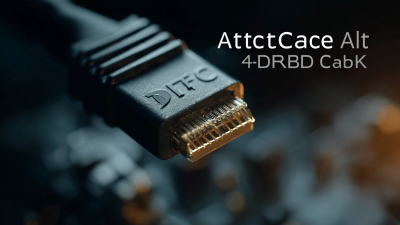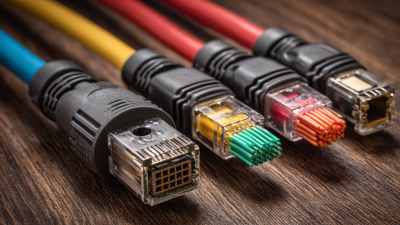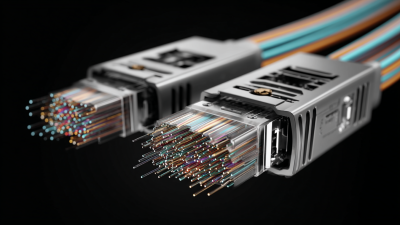Leave Your Message
In today's fast-paced digital landscape, the demand for high-speed data transfer is more crucial than ever, and one pivotal technology making strides in this space is the 25G SFP28 Active Optical Cable. These advanced cables offer a significant upgrade over traditional copper solutions, enabling data centers and enterprises to achieve greater bandwidth and lower latency. With their ability to support high-speed connectivity over longer distances, the 25G SFP28 Active Optical Cable is emerging as the go-to choice for organizations looking to enhance their network infrastructure. This introduction to the benefits of these innovative cables will explore how they not only optimize data transmission but also facilitate scalability and energy efficiency, thus positioning themselves as an essential component in the evolution of networking technology.

25G SFP28 Active Optical Cables (AOCs) are revolutionizing data transfer in modern data centers, offering significant advantages over traditional copper cables. According to a report by Dell’Oro Group, the demand for 25G technologies is expected to grow at a CAGR of over 20% through 2025 as organizations strive to upgrade their infrastructure to support higher bandwidth requirements. One of the key advantages of using 25G SFP28 AOCs is their ability to provide high data rates over longer distances, typically up to 100 meters, without the signal degradation commonly associated with copper solutions.
Furthermore, 25G SFP28 AOCs are not only lightweight and flexible, making them easier to install and manage, but they also consume less power—around 30% less than traditional copper cables. This reduced power consumption contributes significantly to lower operational costs, which is vital for data centers that prioritize energy efficiency. In a competitive market, where the global data center energy consumption is projected to surpass 200 terawatt-hours by 2025, the implementation of efficient technologies like the 25G SFP28 can provide a crucial advantage for operators looking to optimize both performance and cost.
This chart illustrates the key advantages of 25G SFP28 Active Optical Cables in data centers, focusing on metrics such as bandwidth, maximum distance, and latency.
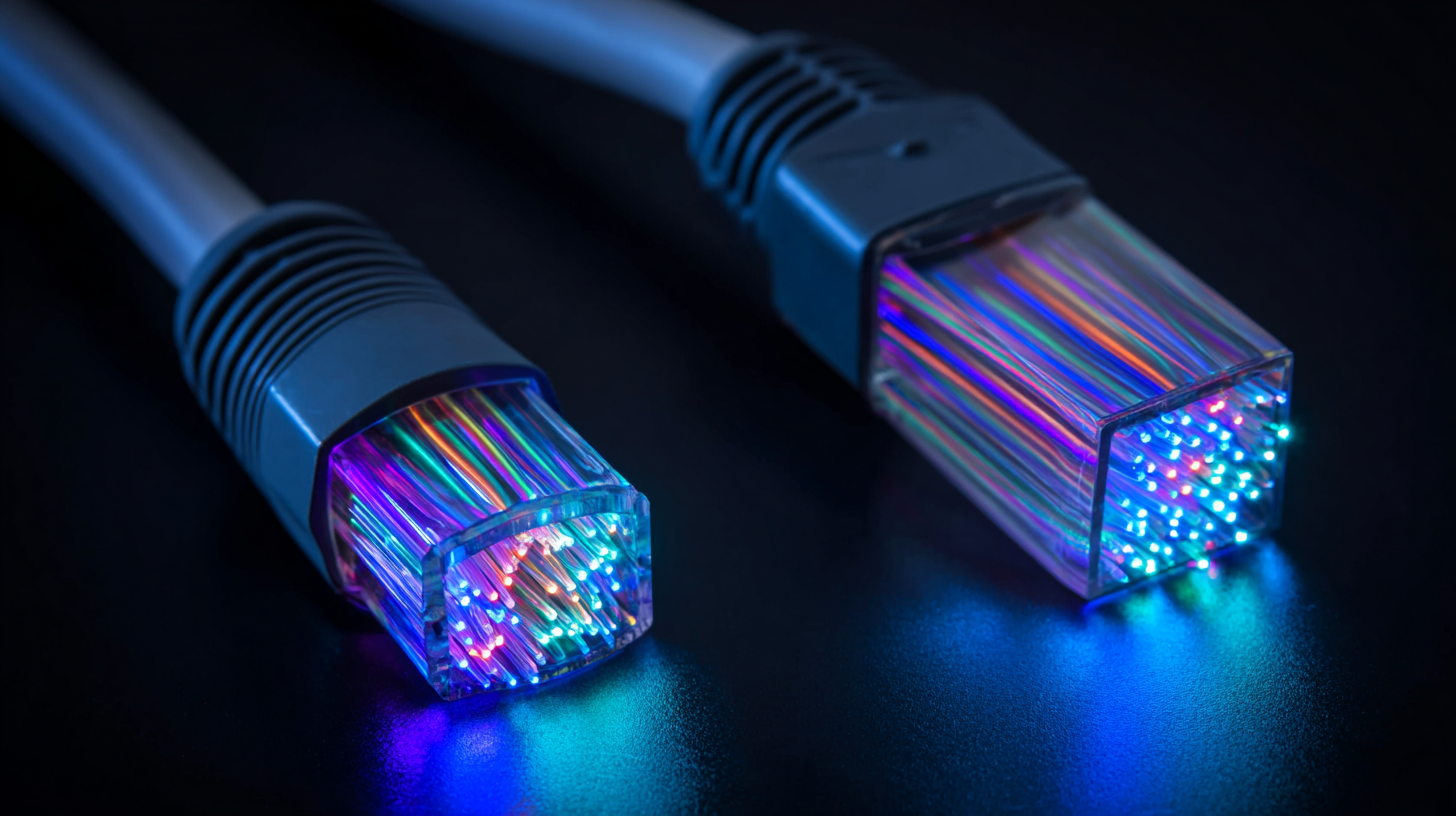 As data demands surge in modern networks, the comparison between 25G SFP28 Active Optical Cables (AOCs) and traditional copper cables has become increasingly significant. AOCs operate at higher speeds and offer greater distances without compromising performance. For instance, while copper cables usually support distances up to 7 meters for 25G transmission, AOCs can effectively transmit data over distances reaching 100 meters or more, as confirmed by the IEEE 802.3cc standard. This distance advantage enables companies to optimize their server room layouts and network architecture, reducing clutter and enhancing airflow.
As data demands surge in modern networks, the comparison between 25G SFP28 Active Optical Cables (AOCs) and traditional copper cables has become increasingly significant. AOCs operate at higher speeds and offer greater distances without compromising performance. For instance, while copper cables usually support distances up to 7 meters for 25G transmission, AOCs can effectively transmit data over distances reaching 100 meters or more, as confirmed by the IEEE 802.3cc standard. This distance advantage enables companies to optimize their server room layouts and network architecture, reducing clutter and enhancing airflow.
Tips: When considering a switch to 25G SFP28 AOCs, assess the current cabling infrastructure and future scalability needs. The migration from copper to fiber can lead to significant cost savings in the long run, especially as optical cables generally require less power to operate, resulting in lower energy bills and less heat generation.
Moreover, AOCs are lightweight and flexible, making installation easier and requiring less physical space compared to traditional copper cables. Recent industry reports indicate that organizations using AOCs experience a decrease in installation time by up to 50%. This rapid deployment enables faster upgrades to network capacity, providing a competitive edge in data-intensive applications and cloud services.
The performance metrics of 25G SFP28 Active Optical Cables (AOCs) play a critical role in modern data transfer applications. These cables are designed to support high-speed data rates of up to 25 Gbps, making them ideal for data centers and enterprise networks that require reliable and fast connectivity. The low latency offered by SFP28 AOCs significantly enhances data communication efficiency, fulfilling the increasing demand for rapid data processing and transmission.
Latency, a key performance indicator in networking, is notably reduced with the adoption of 25G SFP28 AOCs. These cables utilize advanced optical technology, which minimizes the propagation delay and improves overall response times during data transmission. Furthermore, the ability to maintain consistent performance over longer distances ensures that organizations can scale their network infrastructure without compromising speed or reliability. As data transfer requirements continue to grow, the integration of 25G SFP28 AOCs presents a viable solution for achieving optimal performance and meeting the demands of high-capacity applications.
In today's networking landscape, 25G SFP28 Active Optical Cables are becoming increasingly significant due to their enhanced speed and efficiency in data transfer. These cables cater to various applications, making them particularly valuable for data centers, enterprise networks, and high-performance computing environments. Their ability to support high bandwidth requirements is pivotal in scenarios such as virtualized environments, cloud computing, and multimedia data transmission, allowing organizations to effectively manage large volumes of data with minimal latency.
**Tip:** When considering 25G SFP28 for your network, ensure compatibility with existing infrastructure to leverage its full potential without disruptions.
Moreover, 25G SFP28 is ideal for recent advancements such as Internet of Things (IoT) devices and artificial intelligence applications that demand rapid data processing capabilities. The flexibility and scalability offered by these cables make them suitable for modern networking challenges, enabling seamless integration across various platforms. With the continuous evolution of data traffic requirements, aspiring to implement 25G solutions can significantly enhance network performance.
**Tip:** Always assess the total cost of ownership, including maintenance and scalability factors, when investing in networking solutions to maximize long-term benefits.
| Application | Use Case | Data Rate (Gbps) | Distance (m) | Connector Type |
|---|---|---|---|---|
| Data Center Interconnect | High-speed connections between data centers | 25 | 100 | MTP/MPO |
| Cloud Computing | Support for scalable cloud service architectures | 25 | 70 | LC Duplex |
| High-Performance Computing (HPC) | Connecting compute nodes with low latency | 25 | 30 | LC/SC |
| Telecommunications | Enhancing backbone connections for ISPs | 25 | 200 | MTP/MPO |
| Enterprise Networking | Internal data transfers between servers | 25 | 100 | LC Duplex |
The utilization of 25G SFP28 active optical cables is emerging as a cost-effective solution for high-speed data transfer in modern networking environments. With the increasing demand for bandwidth driven by cloud computing and AI applications, these cables offer both affordability and scalability. Organizations can adopt 25G SFP28 technology without incurring significant infrastructure changes, allowing for seamless integration with existing systems. This flexibility makes it an attractive choice for businesses looking to enhance their data transfer capabilities while managing costs effectively.
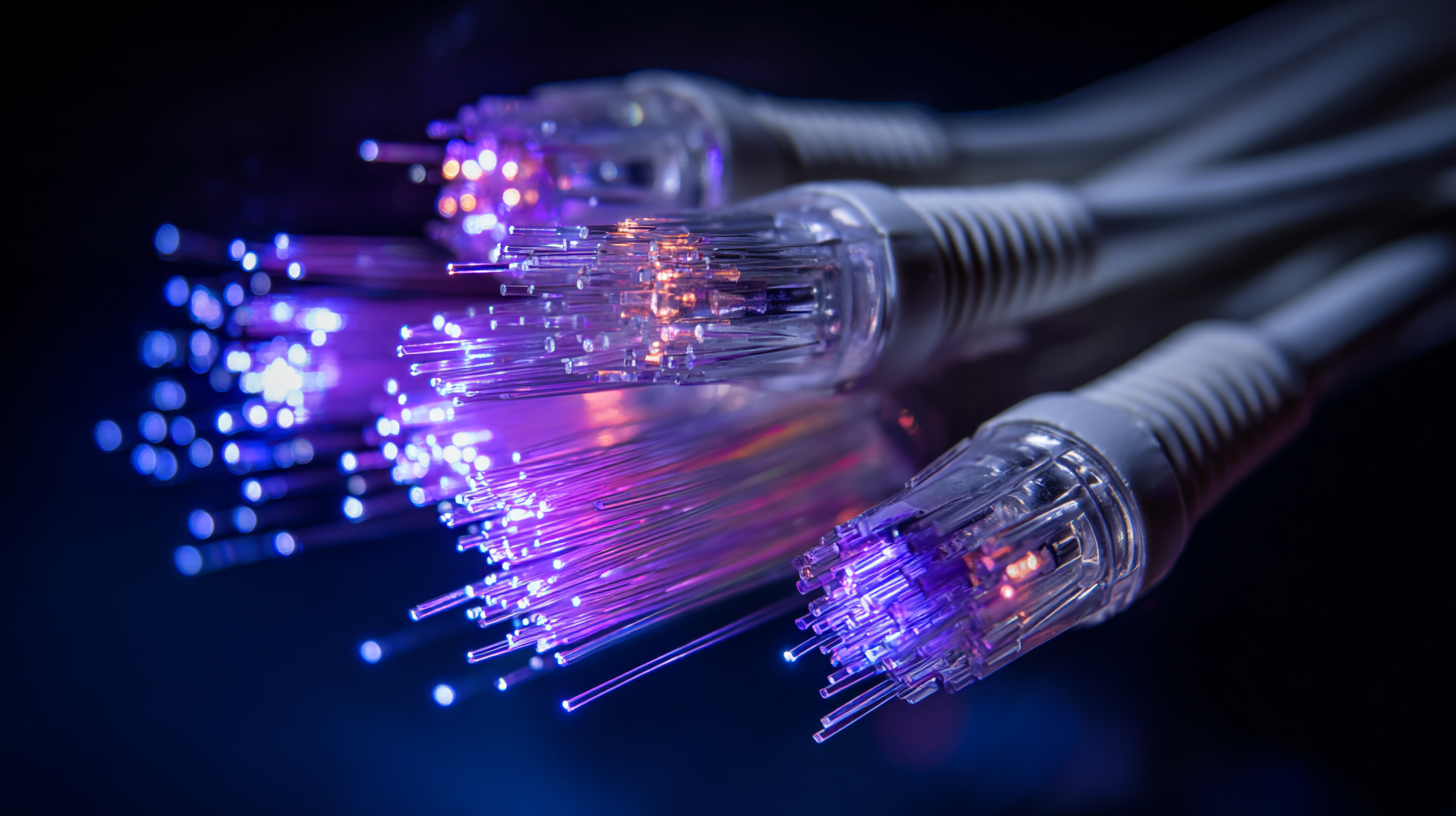
As seen with the recent introduction of advanced servers aimed at optimizing telecommunications for AI and cloud applications, the need for efficient data solutions continues to grow. By leveraging 25G SFP28 active optical cables, companies can ensure that their network infrastructure is not only scalable to meet future demands but is also capable of delivering high-speed connectivity necessary for resource-intensive applications. This combination of performance and cost-efficiency positions 25G SFP28 technology as a strategic asset for organizations looking to thrive in an increasingly digital landscape.
